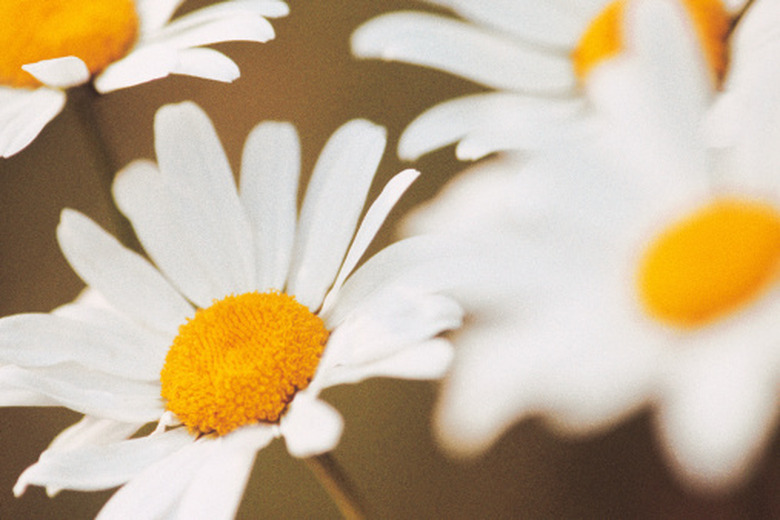If You Cut Back Shasta Daisies Will They Rebloom?
Perennials are durable plants that return to bloom year after year, and the Shasta daisy (Leucanthemum x superbum) is especially dependable. While perennials require little care, regular maintenance keeps the plants healthy. Although cutting the Shasta daisy back may seem drastic and counterproductive, the reward is fuller, more vibrant plants the following year.
Benefits of Cutting Back
Like all perennials, the Shasta daisy shows its age by becoming thin and lanky. Cutting back annually revitalizes it, resulting in a healthy, more vibrant plant. Cutting back may even add more years to the life of the already long-lived plant. Growth is more vigorous, and the Shasta daisy will be more resistant to pests and disease. Cutting back also gives the garden an overall neater appearance.
- Perennials are durable plants that return to bloom year after year, and the Shasta daisy (Leucanthemum x superbum) is especially dependable.
- Growth is more vigorous, and the Shasta daisy will be more resistant to pests and disease.
When to Cut Back
Many gardeners prefer a neat garden created by cutting the Shasta daisy back after the plant is nipped by frost in autumn. Others like to wait until just before growth emerges in late winter or early spring, leaving the foliage in place to add texture to the garden throughout the winter. Waiting until spring also means that the seed heads and foliage are in place to provide food and shelter for hungry songbirds. While either time is appropriate, diseased or pest-infested plants should be cut back in autumn so the problems won't continue into the new growing season.
How to Cut Back
Cutting back the Shasta daisy is a simple matter that involves cutting the plant down to within 6 inches of the ground. Cut diseased or insect-infested plants down to the ground. To cut back the Shasta daisy, use garden pruners, shears or any cutting tool you have on hand. If you have several plants, use a power trimmer or electric pruning shears.
- Many gardeners prefer a neat garden created by cutting the Shasta daisy back after the plant is nipped by frost in autumn.
Deadheading
Deadheading Shasta daisies is less drastic than cutting back, but is just as important for keeping your plant blooming its best. To deadhead, remove Shasta daisy blooms with pruning shears or your fingernails as soon as the flowers begin to fade. Once flowers begin to wilt, the plant naturally stops blooming and begins to produce seed. Deadheading tricks the flowers, which continue to bloom instead of going to seed prematurely.
Division
Dividing the Shasta daisy every two to three years is another way of keeping the plant youthful and vibrant, as old plants tend to die down and become woody in the center. Division also is a simple way of propagating new plants from mature plants. To divide the Shasta daisy, dig the entire plant, preserving as many roots as possible. Split the plant into smaller sections, then discard the old, woody center section. Replant the original Shasta daisy and plant the newer sections at a new location, or share them with fellow gardeners.
- Deadheading Shasta daisies is less drastic than cutting back, but is just as important for keeping your plant blooming its best.
